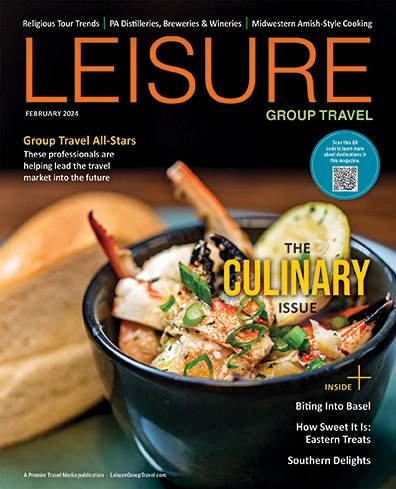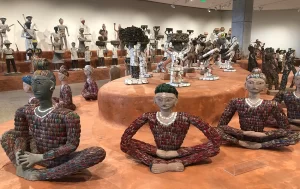Culinary tourism is a booming global trend. While hardly more than a decade ago taking a “food tour” was a new concept, today, companies offer food-inspired themed trips, even weeks-long experiences personally led by chefs that curate their favorite restaurants and share culinary insights along the way.
And it’s no wonder: food is a great way to experience a new destination. It tells a story, connects us with a place and with each other.
Luckily, you don’t need to hire a traveling chef to add some gastronomic sizzle to the trips you organize. As a tour leader, here are five ways you can enhance the culinary experience of a place.
Find a local event
Local farmers markets can be found in the smallest of towns and in the center of large cities. They’re usually filled with purveyors of all sorts of goods made by regional farms and artisans. Do a Google search along your route for the towns’ names and “farmers market” to see if you can coordinate your itinerary and or even meal stops to create a special, local experience.
Do your own tasting
When I lead tours in Maine, I have all my fellow travelers try their local cola, Moxie. It’s an “acquired taste” to say the least, and guests marvel at its strange bitterness. But they all love the experience of tasting a different drink. While buying individual cans for all your travelers might prove costly, I buy small paper dixie cups, and pour just enough to give my fellow travelers a little sip. You can do tastings at a beautiful sight, a park in a city, or on your bus or van. In winter time, I might even bring a thermos and make some hot chocolate in the breakfast room at the hotel, and share it later at a cold moment during the day.
Book a cooking class instead of dinner
Cooking classes often feature passionate chefs who are as good at storytelling as they are at cooking. It turns a good meal into a great, interactive, unforgettable experience. Replacing a standard sit-down meal with a cooking class helps travelers really connect with the ingredients and the story.
Don’t forget the stories
Whenever you share a snack, treat, or meal, think: what kind of story or context can I provide to make this food more memorable? Food connects us to place in a powerful way. For example, when I stop at a New York City pizza shop, I remember to share the history of the first Italians from Naples who sold pizza as an easy portable lunch for workers, and the fascinating stories of the first families that came over and sold this new snack to locals.
Ask to have the chef or manager speak to your group
Even when your meal’s cuisine doesn’t connect with the local culture, something else does: the staff. From the chef to the manager to the wait staff, these are people who live in the place you’re visiting. As a leader of a trip, take these opportunities to ask the chef or manager to come and speak to the group about their passion for what they do. I’ve been surprised and awed by listening to the culinary and entrepreneurial journeys taken by restaurant owners and chefs. And hearing of the ambitions and passions that the wait staff might have for their life makes a restaurant more human, and less of a service provided. And after all, that’s what food does at its best: creates connections, between people and places.
About the Author:
Mitch Bach is the co-founder of TripSchool, a learning organization that helps tour guides and other travel professionals grow their skills and pursue their travel career dreams. He is also a principle at Tourpreneur, a company that helps operators flatten the learning curve and increase profits in a supportive community.








